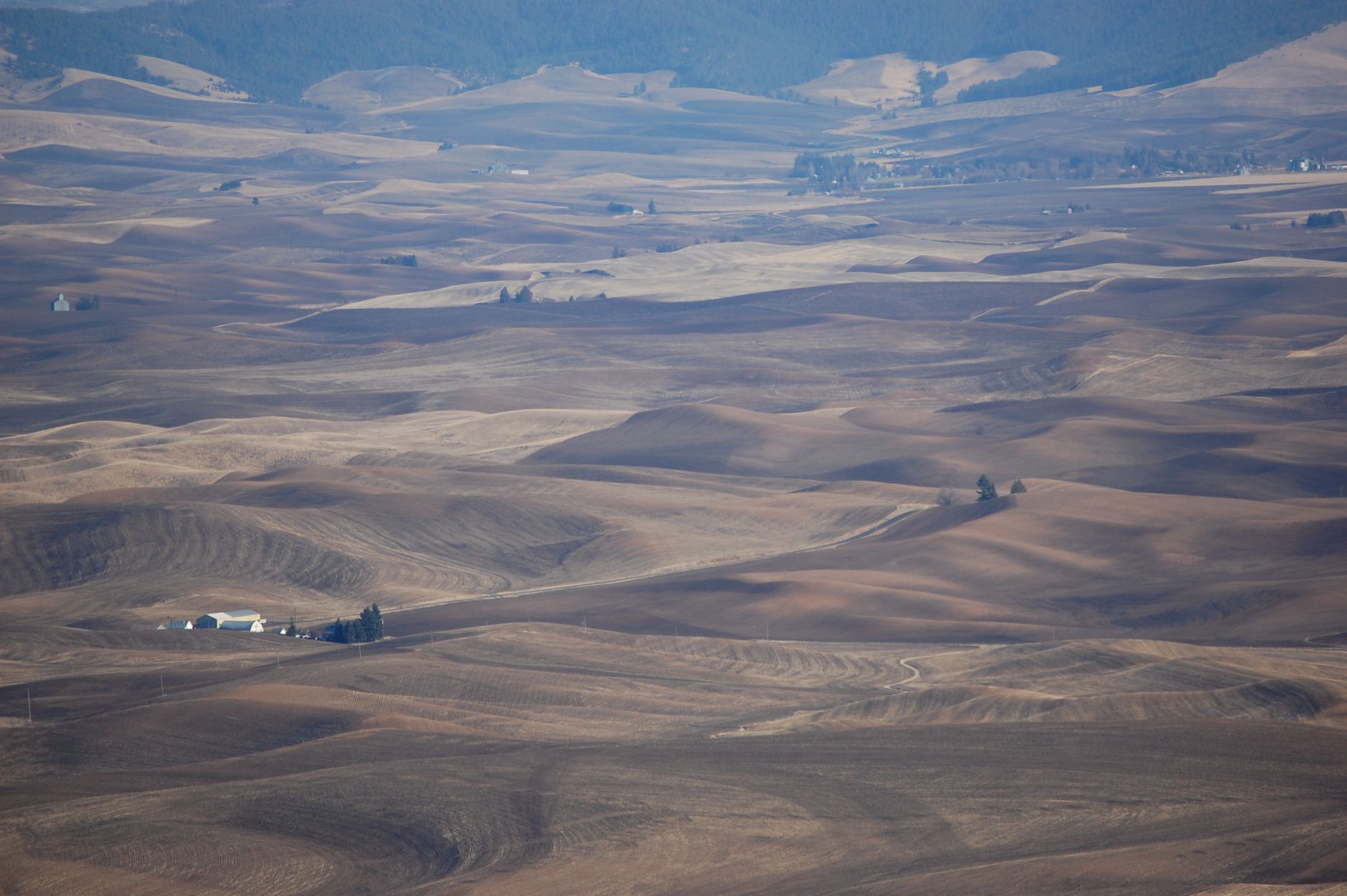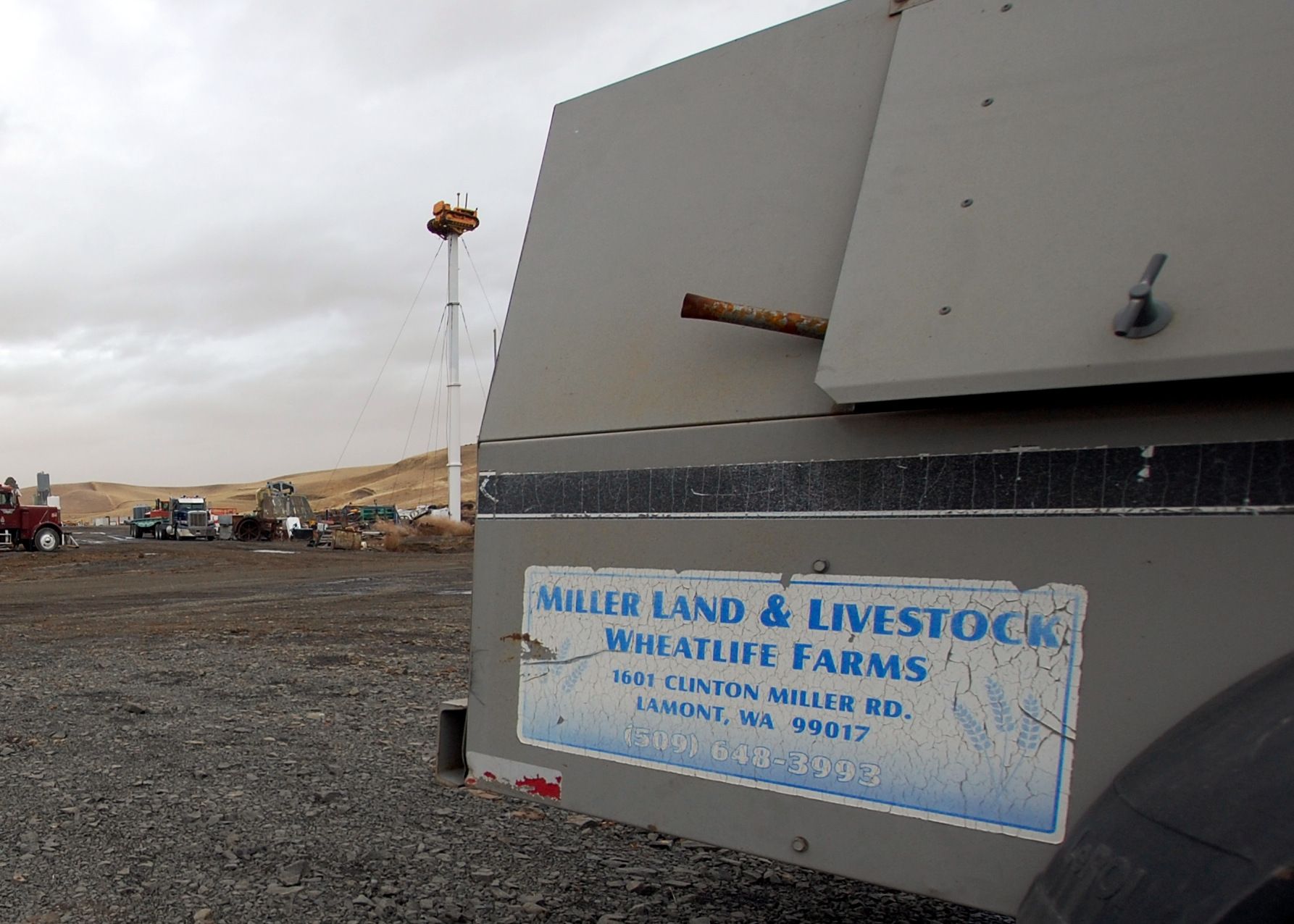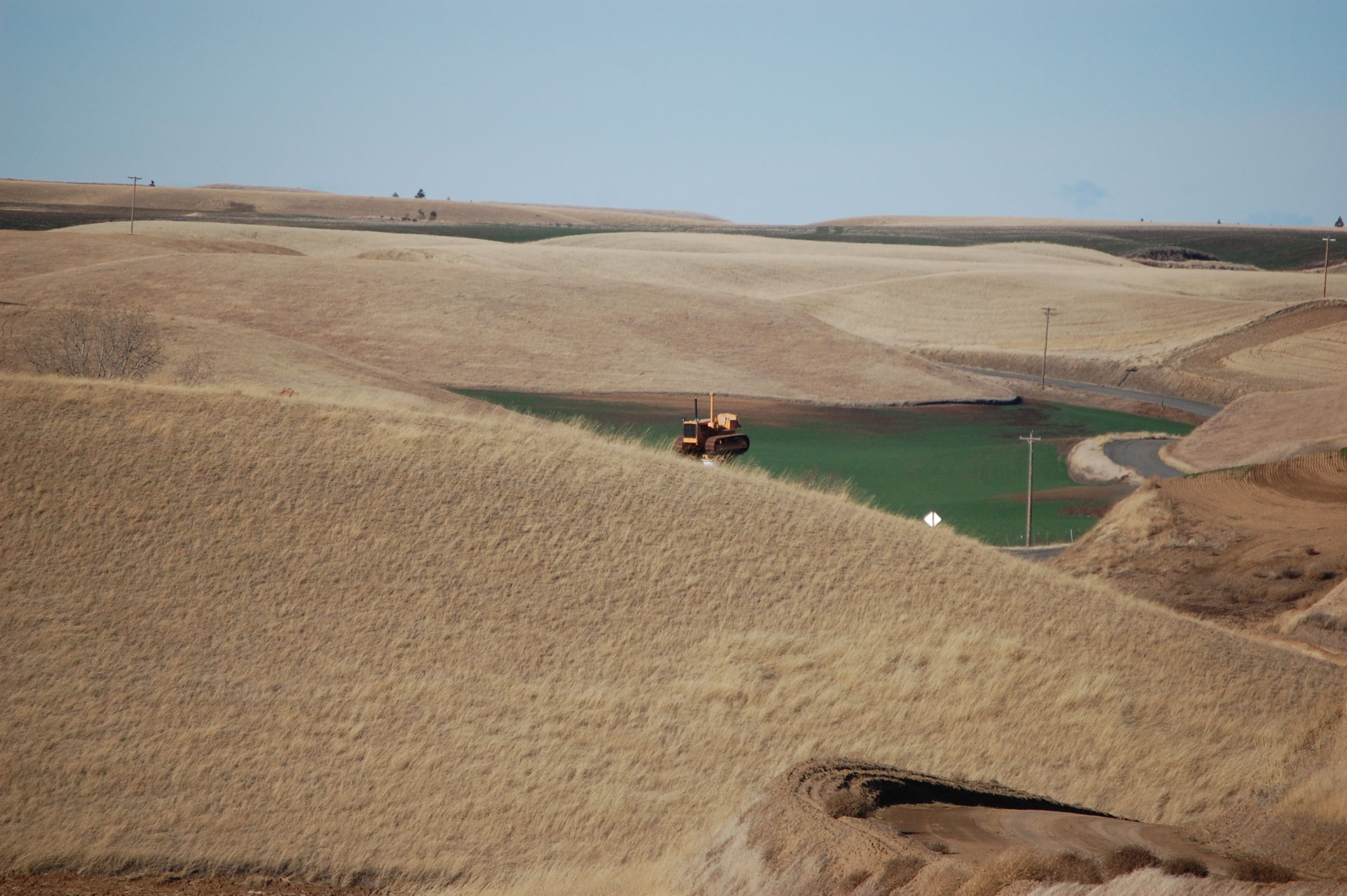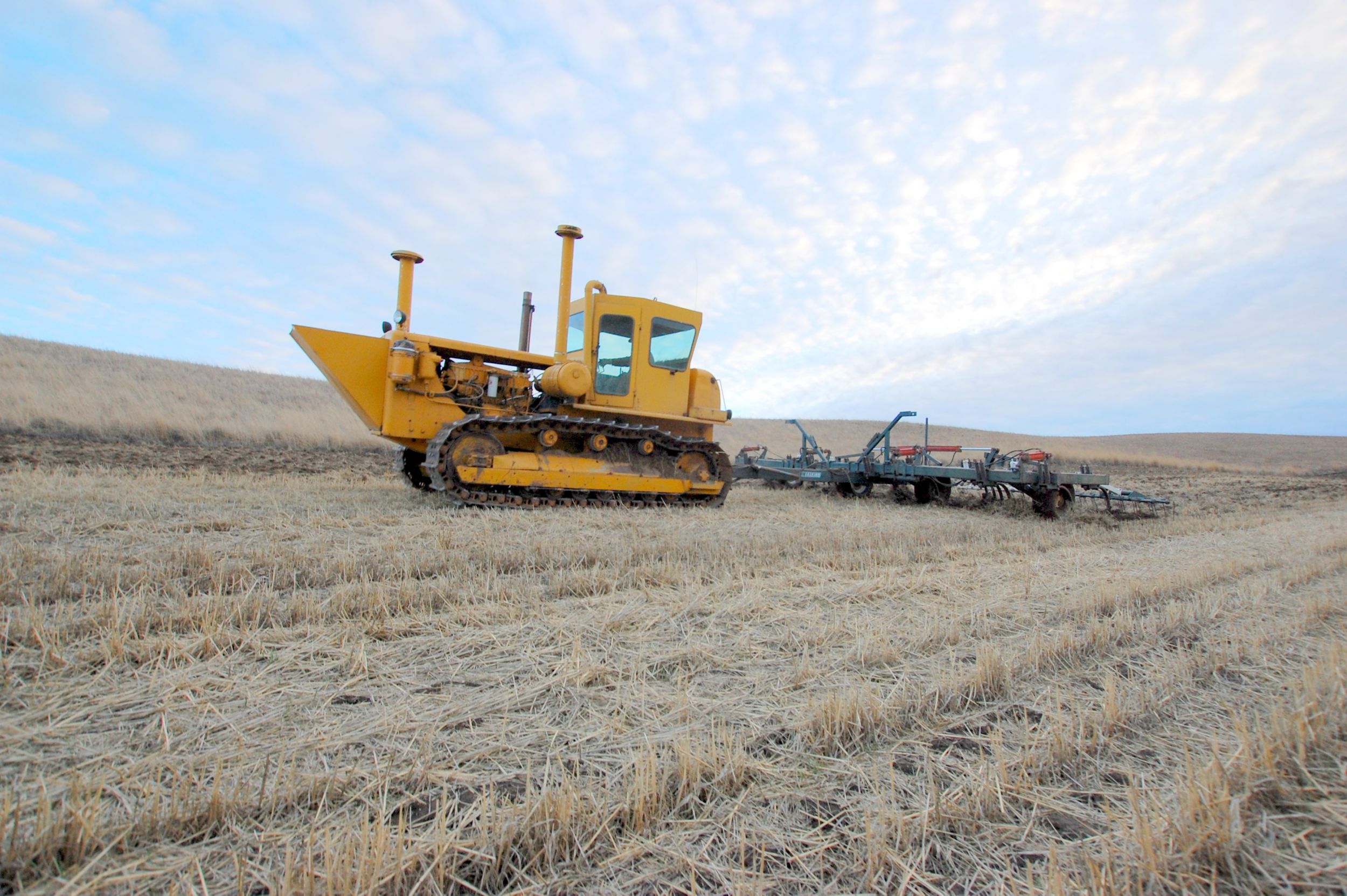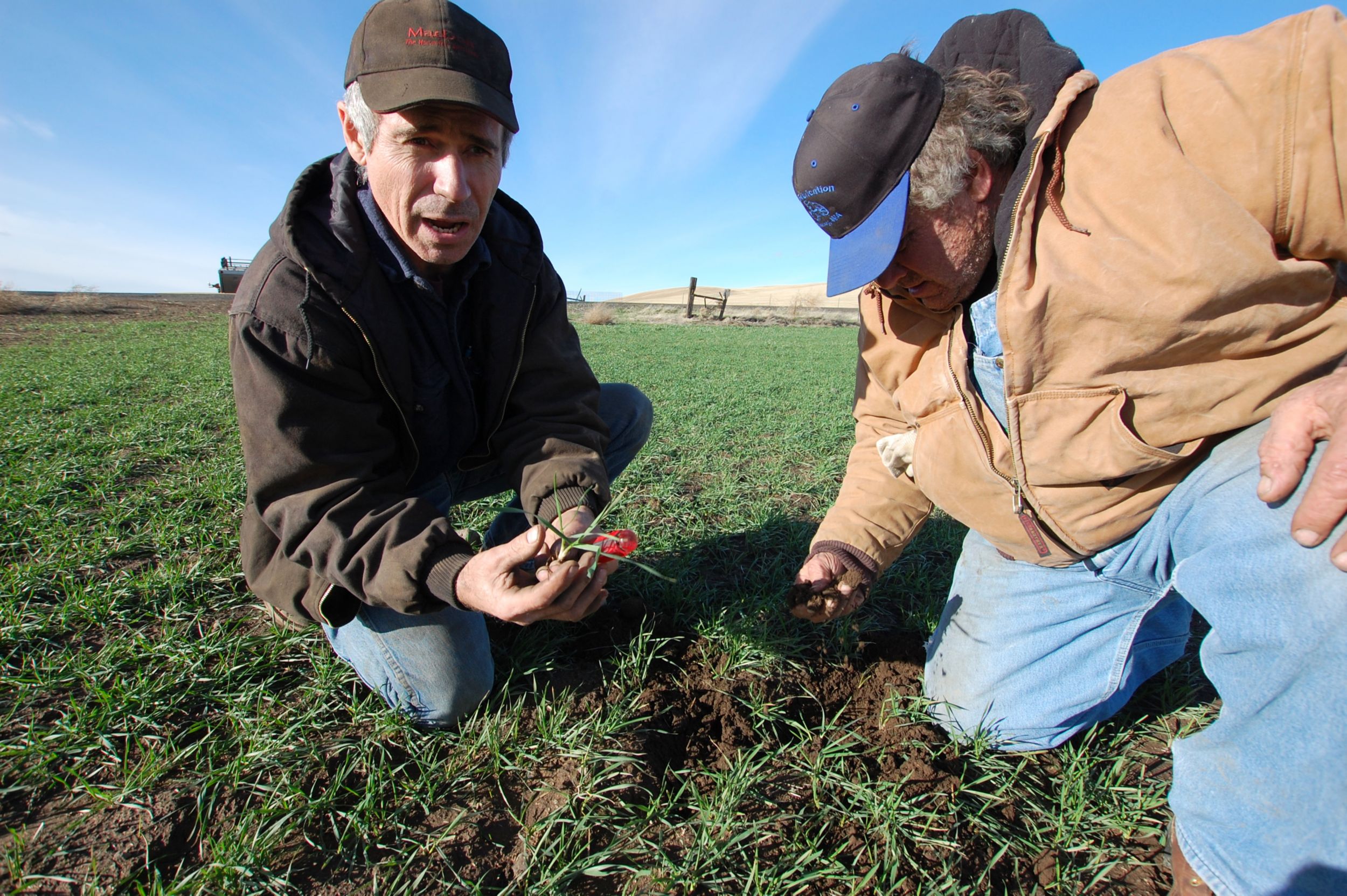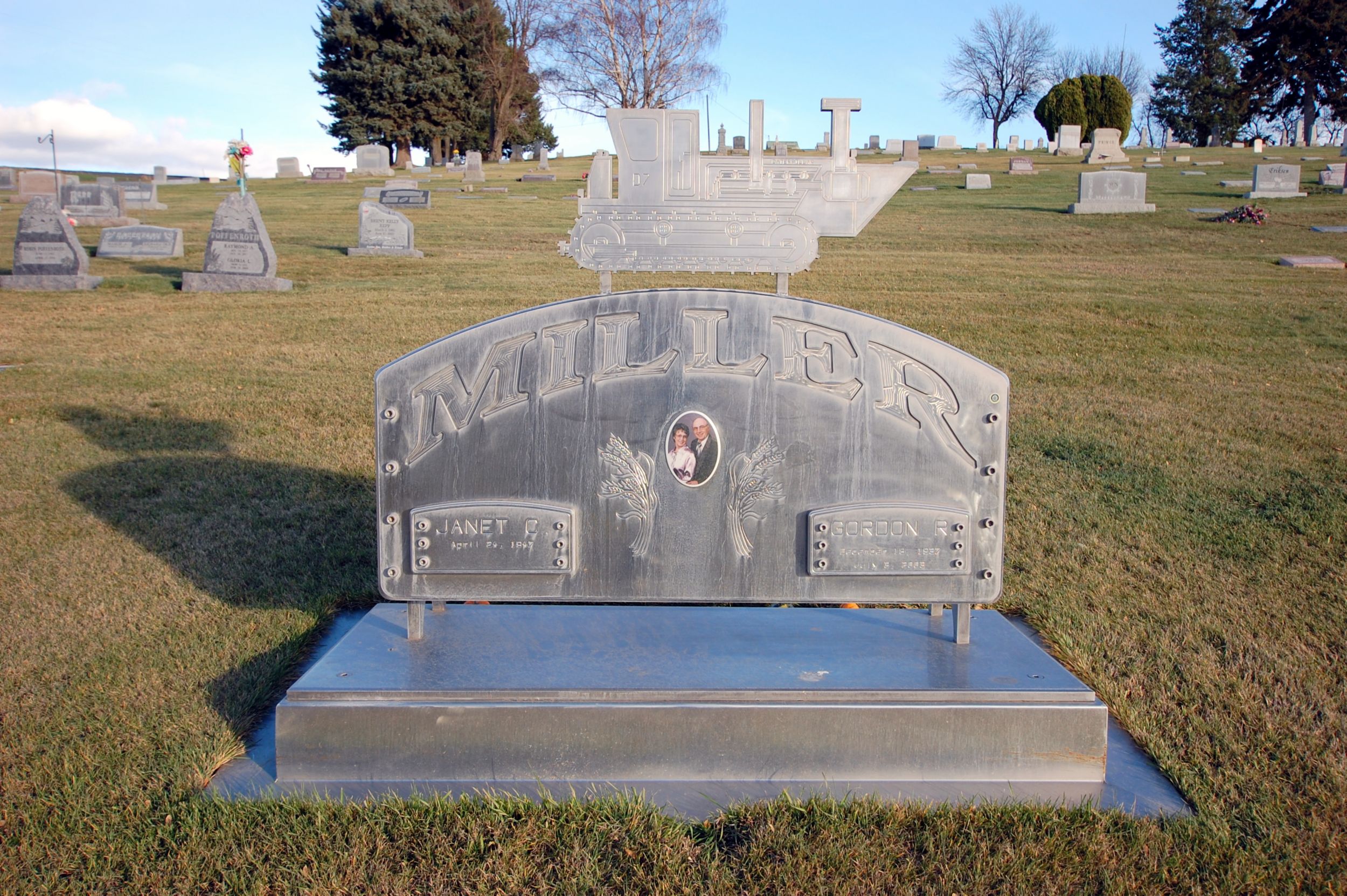Amber waves of grain? Not in Whitman County, Washington. Here, in America’s No. 1 wheat-producing patch, the waving fields are colored Cat® yellow. For decades now, enterprising area farmers have been hot-rodding Cat dozers and using the souped-up machines for land conversion to tame the region’s steep, sloping grasslands. Locals are quick to credit the role Cat products played in transforming the county’s rocky hills into one of the world’s most fertile breadbaskets. But one Whitman County family, the Millers, has taken its appreciation to a higher level.
The early French-Canadian fur trappers and traders who explored the Pacific Northwest called the rolling grasslands they encountered west of the Bitterroot Mountains in what is now eastern Washington State, “la pelouse.” The lawn.
Like so many other French-Canadian names in this part of the United States – Bellevue, Deschutes, Coeur d’Alene, Boise, Butte, the list goes on – the moniker stuck, though the pronunciation and spelling were gradually Anglicized.
Today, the wind-swept hills are known as The Palouse. The wild grasses that once grew here have been replaced with wheat. Lots of it. These days, Washington State is consistently ranked among the top wheat-producing regions in the country, which is to say among the top wheat-producing regions in the world, behind North Dakota, Kansas and Montana and forever slugging it out for fourth-place bragging rights with South Dakota.
But Washington farmers are absolute tops when it comes to yield, managing to raise more wheat per acre than farmers anywhere else in the United States. And Whitman County, in the heart of The Palouse, is the No. 1 wheat-producing county in the nation.
Most of that wheat – 80 to 90 percent depending on the year – is exported to faraway places like the Middle East, Japan, Taiwan and South Korea, where it is transformed into national staples, you might even say the national staffs of life, things like pita bread and udon and soba noodles. The whole world, in short, grazes on this lawn.
The fertile soil here – known as silty loess to scientists – plays a big role in the region’s outsized yields. But so does the grit, determination, and resourcefulness of the people who farm here, especially the first few generations of growers.
All that tall grass that caught the eye and captured the imagination of the French-Canadians? It obscured a whole lot of volcanic rock that had to be cleared off the land before it could be farmed efficiently. And the region’s rolling beauty – from nearby Steptoe Butte, a quartzite mountain in Whitman County that rises more than 3,000 feet into the air, The Palouse looks like a sea of ski moguls – made planting and harvesting here extra challenging.
For a long time, this was mule country. Mechanization, of course, changed everything – but the machines used for land conversion of The Palouse had to be especially durable and reliable – as well as easy to work with – because taming this wild, windswept region involved a lot of surprises, demanded more horsepower and required plenty of on-the-fly flexibility.
It was a perfect place, in short, for Cat products.
‘A WHOLE NEW WORLD’
Even old-timers, like 80-year-old Bill Swannack, whose wheat farm outside St. John, Washington has been in the family for 129 years, can’t say exactly when the first Cat dozer turned up in Whitman County.
THE FAMILY’S FIRST CAT® MACHINE, A 1946 D6, WAS ‘A WORKHORSE,’ RONNIE MILLER SAYS. “IT DID EVERYTHING. IT CHOPPED THE GRAIN, IT CHOPPED THE HAY, IT PULLED THE STONE BOAT FOR PICKING UP ROCKS, IT PULLED THE COMBINE, IT PLOWED, IT FED THE COWS.”
But Swannack recalls its impact vividly. “It was a whole new world for us farm guys,” he says.
One of the earliest Cat dozers to arrive in the area, a 1946 D6 that was retired from duty in 1981, is still here – mounted on a pole that could very well be the second-tallest thing in Whitman County after Steptoe Butte.
It was erected by the Miller family in memory of their grandfather Glen Miller, a school teacher turned farmer, and his son Gordon, who – with some help from the Cat D6 – carved out what has become a 20,000-acre family farm spread out over 40 miles of Whitman County. (In 1981, documentary filmmaker Steven Marts profiled Glen and his family in an elegiac 28-minute piece titled “Man of Wheat.”)
Both Glen and Gordon were big fans of the versatility, reliability and productivity of Cat dozers. And they passed their admiration and respect on to their kids and grandkids.
“That was the tractor all of us learned to drive with a disk behind us,” says 55-year-old Ronnie Miller, who together with his brothers Gary and Monte, and cousins Clark, Cory and Dwayne, now operates the sprawling family enterprise.
“It did everything. It chopped the grain, it chopped the hay, it pulled the stone boat for picking up rocks, it pulled the combine, it plowed, it fed the cows. It was a workhorse.”
The family purchased the D6 dozer brand new – and they waited patiently for the privilege. Cat machines were nearly impossible to get during World War II because production for the military had been prioritized. So the local Cat dealer created a waiting list during the conflict’s duration, which he posted on his showroom wall for all to see.
When the 1946 D6 that now stands sentinel over the Miller farm finally arrived in nearby St. John on a rail car in early 1947, the Millers were actually No. 2 on the wait list. They got the machine anyway because the farmer ahead of them on the list thought the machine’s tracks were too narrow and its transmission speeds wrong. “My granddad said, ‘I don’t care what it is. If it’s a Cat tractor, I’ll use it.’ So he took it,” Gary, 54, says. “It’s been on the place ever since.”
THE CAT MACHINE THAT TAMED THE PALOUSE
For the first decade or so, Glen and Gordon used the D6 as manufactured. But over time, like every other Cat machine you now see in these parts – and in Whitman County in particular, they are as common as stacks of wheat – the dozer was tinkered with.
Extensively.
Endlessly.
Exuberantly.
And ingeniously.
It started in the mid-1950s, just as Glen’s son Gordon and his pals Norm Wilson and Gary Cochrane were moving from adolescence into adulthood and when many members of their generation around the United States were hot-rodding their parents’ old vehicles and creating the custom car culture.
Gordon, Norm and Gary didn’t have cars. So they started hot-rodding – or as Gordon’s son Monte, 50, puts it, “whooping things up” – with the Cat D6 dozers that were everywhere in these parts.
- They took the 4R motor out of the D6s and put new D69U motors in.
- They wet-decked the machines’ steering clutches.
- They took the D69U motors out and dropped in Cat 3306 and 3406 on-highway truck engines, extending the sheet metal on the dozers’ noses by almost two feet to accommodate the larger motors.
- The 400-horsepower truck engines were – no surprise – a strain on the stock transmissions. So they added a bearing to the top shaft, mounting it directly to the cover of the existing Cat transmission.
- The Palouse’s silty soil turned into corrosive dust when kicked up by the dozers’ tracks and sucked into the fan. So they added a hood scoop upfront, which cooled the engine with cleaner air.
Then Gordon, Norm and Gary started experimenting with D7s.
And the tradition of tinkering continued with the next generation of Millers. But unlike the custom car movement, the tweaking wasn’t just for show. The changes made the already productive Cat machines even more productive and helped the Millers and other local farmers survive the many years when the price of wheat threatened to push them to the brink of foreclosure.
“Here in The Palouse,” Monte says, “we always needed more horsepower than you’d get on a standard machine. But when we hot-rodded these tractors, whether it was a D6 or a D7, we’d also wind up doing a third more work on a third less fuel because we could run them in fourth gear all day long where the engines weren’t working so hard. It was quite a savings. More acres per hour equals lower cost per acre. And since we were farming land all over the place, we could get over the ground quicker, too.”
In the early 1970s, the family built a 12,000-square-foot shop where they tinkered with the dozers over the winter, doing everything on their own except grinding crankshafts or machining engine blocks.
“My grandfather Glen told us, ‘Boys, whatever you do, do everything you can yourselves.’ That’s what he did and that’s what our dad Gordon did. He loved it. He would eat, breathe and sleep Caterpillar,” Monte says.
“Do everything you can yourselves” was an injunction the boys followed even in tragedy. In 2003, when Gordon died, the Millers fabricated a stainless steel headstone and bench for their dad inside the family’s workshop. The monument, which sits atop Gordon’s grave in the St. John Cemetery and affords visitors sweeping views of The Palouse, is crowned by a representation of a Cat D7 outfitted with a distinctive Whitman County air scoop.
OVER THE DECADES, THE MILLERS AND OTHER FARM FAMILIES IN WHITMAN COUNTY EXPERIMENTED WITH ALL KINDS OF MACHINES AND MODIFICATIONS. “THE D7S WERE THE TOUGHEST THINGS WE COULD COME UP WITH,’ GARY SAYS.
Why a D7 instead of a D6?
“For a long time we couldn’t buy anything new because the price of wheat was so low and we knew how to fix stuff,” Gary says.
“So we’d buy them burned up, wrecked, tipped over, on fire, whatever and we’d rebuild them. The D7s were the toughest thing we could come up with. We’d put 35, 40, 50 feet of implement behind them and dig the ^%$& out of the ground.”
Excuse his French.


